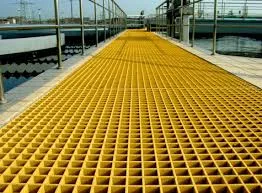
-
 Afrikaans
Afrikaans -
 Albanian
Albanian -
 Amharic
Amharic -
 Arabic
Arabic -
 Armenian
Armenian -
 Azerbaijani
Azerbaijani -
 Basque
Basque -
 Belarusian
Belarusian -
 Bengali
Bengali -
 Bosnian
Bosnian -
 Bulgarian
Bulgarian -
 Catalan
Catalan -
 Cebuano
Cebuano -
 China
China -
 China (Taiwan)
China (Taiwan) -
 Corsican
Corsican -
 Croatian
Croatian -
 Czech
Czech -
 Danish
Danish -
 Dutch
Dutch -
 English
English -
 Esperanto
Esperanto -
 Estonian
Estonian -
 Finnish
Finnish -
 French
French -
 Frisian
Frisian -
 Galician
Galician -
 Georgian
Georgian -
 German
German -
 Greek
Greek -
 Gujarati
Gujarati -
 Haitian Creole
Haitian Creole -
 hausa
hausa -
 hawaiian
hawaiian -
 Hebrew
Hebrew -
 Hindi
Hindi -
 Miao
Miao -
 Hungarian
Hungarian -
 Icelandic
Icelandic -
 igbo
igbo -
 Indonesian
Indonesian -
 irish
irish -
 Italian
Italian -
 Japanese
Japanese -
 Javanese
Javanese -
 Kannada
Kannada -
 kazakh
kazakh -
 Khmer
Khmer -
 Rwandese
Rwandese -
 Korean
Korean -
 Kurdish
Kurdish -
 Kyrgyz
Kyrgyz -
 Lao
Lao -
 Latin
Latin -
 Latvian
Latvian -
 Lithuanian
Lithuanian -
 Luxembourgish
Luxembourgish -
 Macedonian
Macedonian -
 Malgashi
Malgashi -
 Malay
Malay -
 Malayalam
Malayalam -
 Maltese
Maltese -
 Maori
Maori -
 Marathi
Marathi -
 Mongolian
Mongolian -
 Myanmar
Myanmar -
 Nepali
Nepali -
 Norwegian
Norwegian -
 Norwegian
Norwegian -
 Occitan
Occitan -
 Pashto
Pashto -
 Persian
Persian -
 Polish
Polish -
 Portuguese
Portuguese -
 Punjabi
Punjabi -
 Romanian
Romanian -
 Russian
Russian -
 Samoan
Samoan -
 Scottish Gaelic
Scottish Gaelic -
 Serbian
Serbian -
 Sesotho
Sesotho -
 Shona
Shona -
 Sindhi
Sindhi -
 Sinhala
Sinhala -
 Slovak
Slovak -
 Slovenian
Slovenian -
 Somali
Somali -
 Spanish
Spanish -
 Sundanese
Sundanese -
 Swahili
Swahili -
 Swedish
Swedish -
 Tagalog
Tagalog -
 Tajik
Tajik -
 Tamil
Tamil -
 Tatar
Tatar -
 Telugu
Telugu -
 Thai
Thai -
 Turkish
Turkish -
 Turkmen
Turkmen -
 Ukrainian
Ukrainian -
 Urdu
Urdu -
 Uighur
Uighur -
 Uzbek
Uzbek -
 Vietnamese
Vietnamese -
 Welsh
Welsh -
 Bantu
Bantu -
 Yiddish
Yiddish -
 Yoruba
Yoruba -
 Zulu
Zulu
fiberglass clarifier system for efficient water treatment and solid ...
Fiberglass Clarifier System for Efficient Water Treatment and Solid Removal
Water treatment has become a paramount concern globally due to the increasing demand for clean water and growing environmental regulations. Industries and municipalities are continuously seeking efficient and sustainable solutions to manage water quality. One innovative approach that has gained prominence in recent years is the fiberglass clarifier system. This system stands out due to its effectiveness in removing solids from wastewater while offering durability and cost-efficiency.
Understanding Fiberglass Clarifiers
A fiberglass clarifier is a type of sedimentation tank designed to treat wastewater by means of gravity. The fundamental principle behind this system is simple suspended solids in the water settle to the bottom due to gravity, thereby clarifying the water. Fiberglass, as a construction material, provides several advantages that enhance the performance and lifespan of the clarifier system.
Advantages of Fiberglass
1. Corrosion Resistance One of the key benefits of using fiberglass is its inherent resistance to corrosion. Traditional materials like steel or concrete can deteriorate over time when exposed to harsh chemicals in wastewater. In contrast, fiberglass can withstand a wide range of pH levels and chemical compositions, making it ideal for various wastewater treatment applications.
2. Lightweight and Easy Installation Fiberglass is significantly lighter than other materials, which simplifies the handling and installation process. This feature not only reduces transportation costs but also makes it easier to install in challenging terrains or locations with limited access.
3. Customizability Fiberglass clarifiers can be molded into various shapes and sizes, allowing for customization based on specific site requirements. This flexibility ensures that the system can be tailored to meet the unique needs of different wastewater treatment facilities.
4. Long Lifespan With proper maintenance, fiberglass systems can last for decades, providing a long-term solution for water treatment. Their durability reduces the frequency and cost of replacements compared to traditional materials.
fiberglass clarifier system for efficient water treatment and solid ...

5. Cost-Effectiveness While the initial investment in fiberglass clarifiers may be higher than that of some alternatives, the long-term savings in maintenance and operational costs often outweigh these upfront expenses. Additionally, their efficiency in solid removal can lead to reduced disposal costs for sludge.
Efficient Solid Removal Process
The process of solid removal in fiberglass clarifiers begins with inflow management. Wastewater enters the clarifier and is evenly distributed across the tank. As the water moves slowly through the system, larger solids settle at the bottom, forming a sludge layer. This sludge can then be periodically removed and treated separately.
Meanwhile, the clarified water rises to the surface and flows to an outlet, which can be directed towards further treatment processes or discharged into natural bodies of water, depending on regulatory standards. The efficiency of this process largely depends on the design of the clarifier, including parameters like flow rate, tank dimensions, and retention time.
Environmental Impact
Employing fiberglass clarifier systems contributes positively to environmental sustainability. By effectively removing solids and contaminants from wastewater, these systems help reduce pollution in natural water bodies. Cleaner effluent can lead to improved aquatic ecosystems and better quality of water for users downstream.
Moreover, many fiberglass clarifiers are designed to integrate with other treatment technologies, such as biological treatment or filtration systems. This compatibility allows for a comprehensive approach to water treatment, further enhancing the overall efficiency of the process.
Conclusion
In conclusion, the fiberglass clarifier system represents a significant advancement in the field of water treatment. Its corrosion resistance, lightweight nature, customizability, and cost-effectiveness make it an attractive choice for industries looking to improve their wastewater management practices. As the world continues to grapple with water quality issues, technologies like fiberglass clarifiers will play a critical role in ensuring a sustainable and clean water supply for future generations. Embracing such innovative solutions is essential as we strive for a healthier environment and more responsible water resource management.









